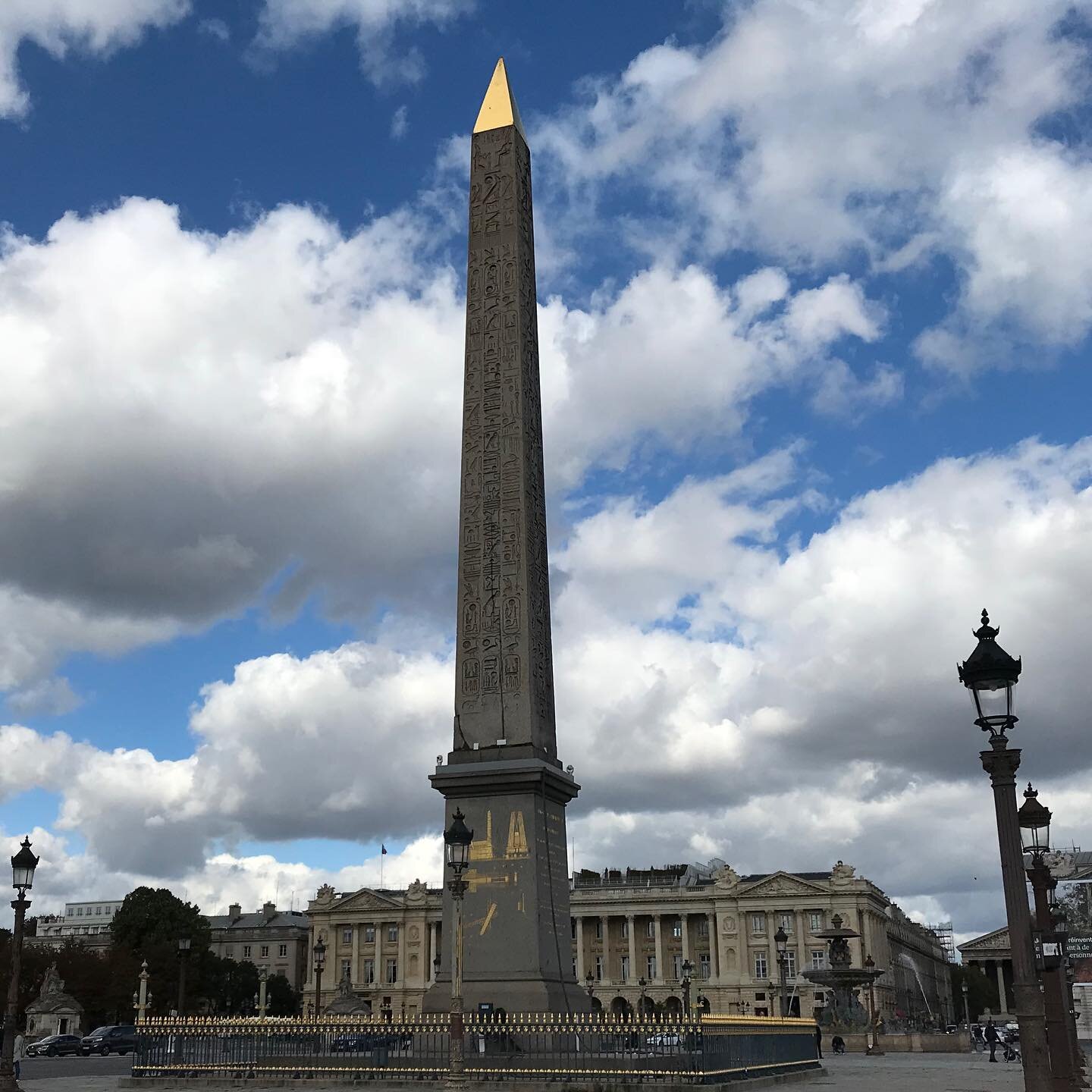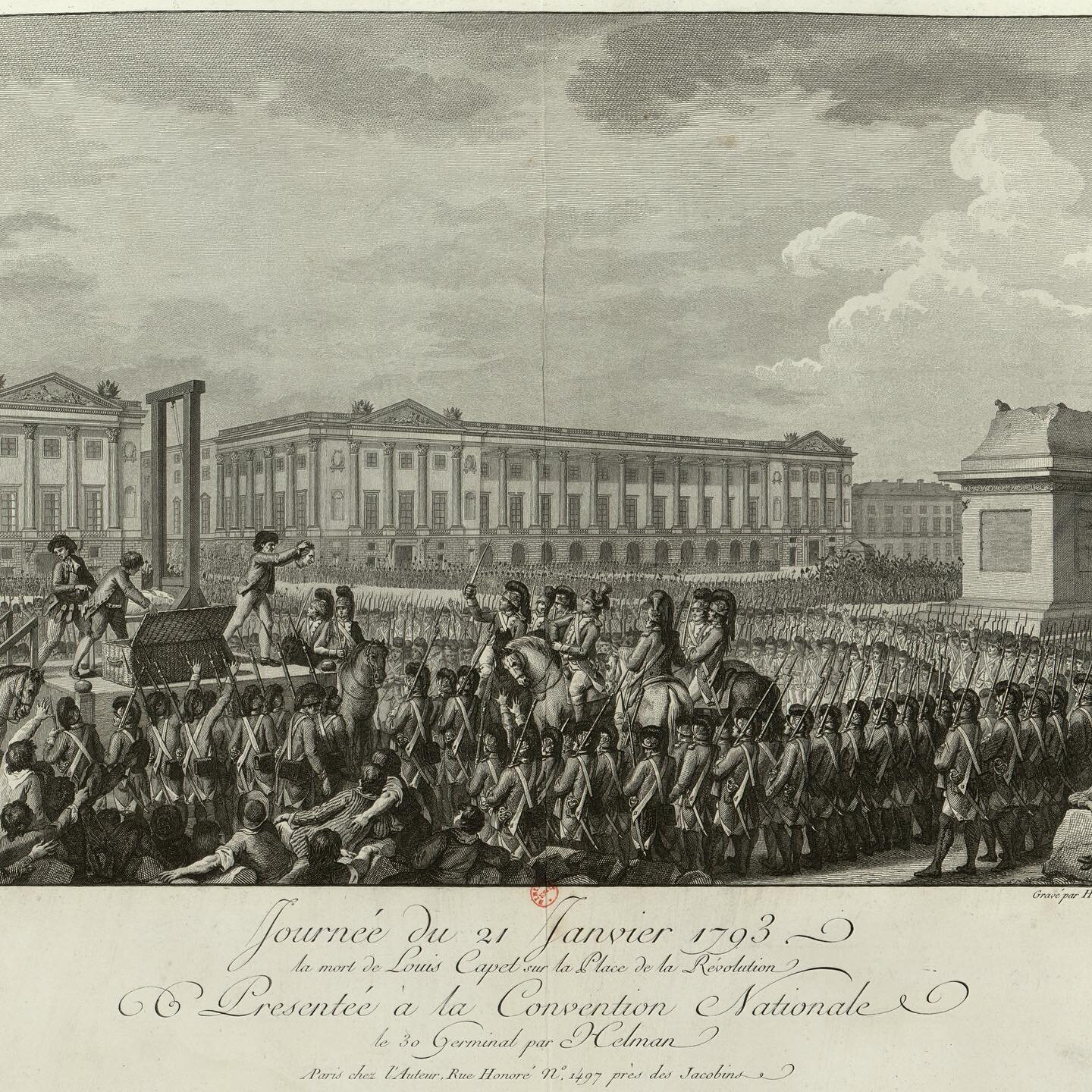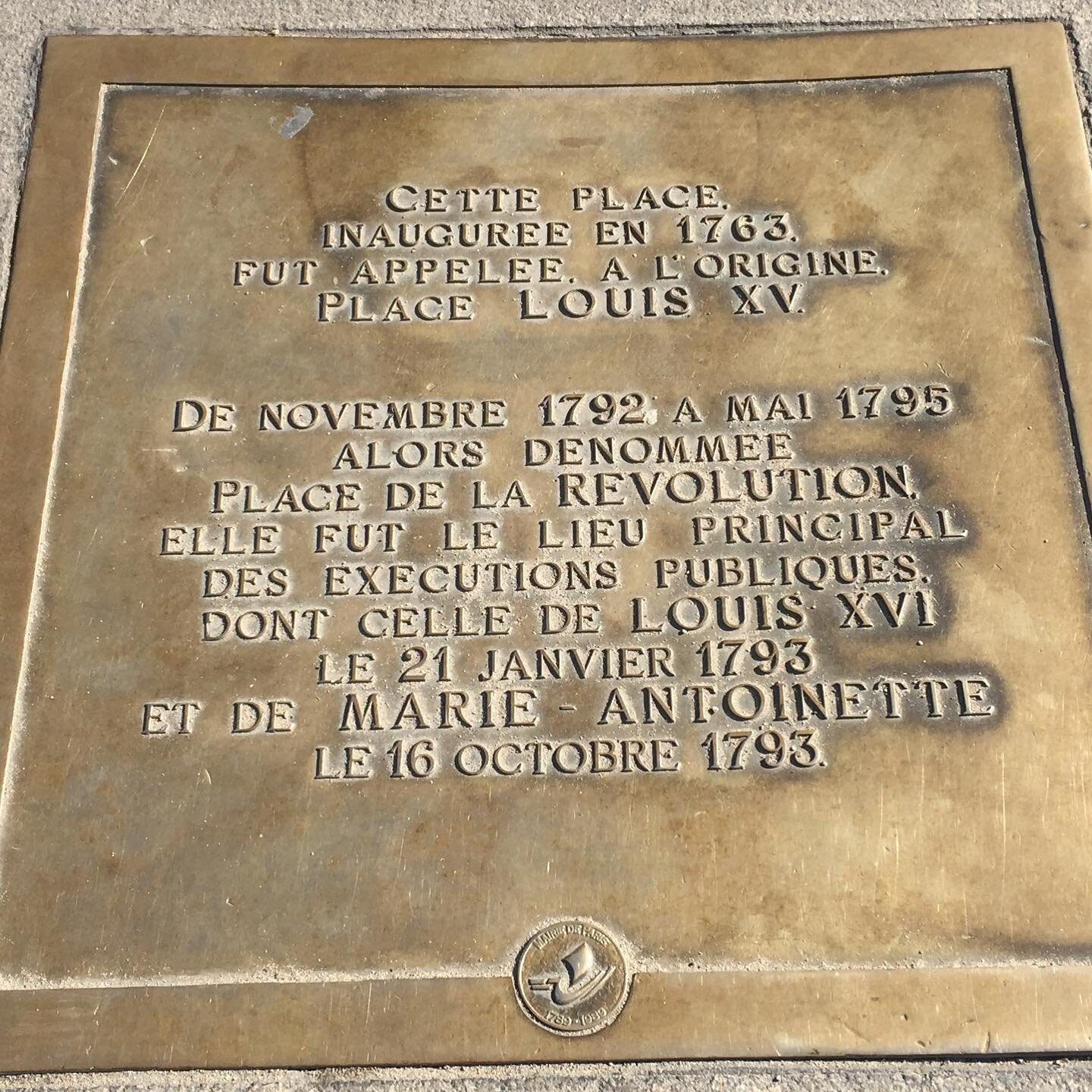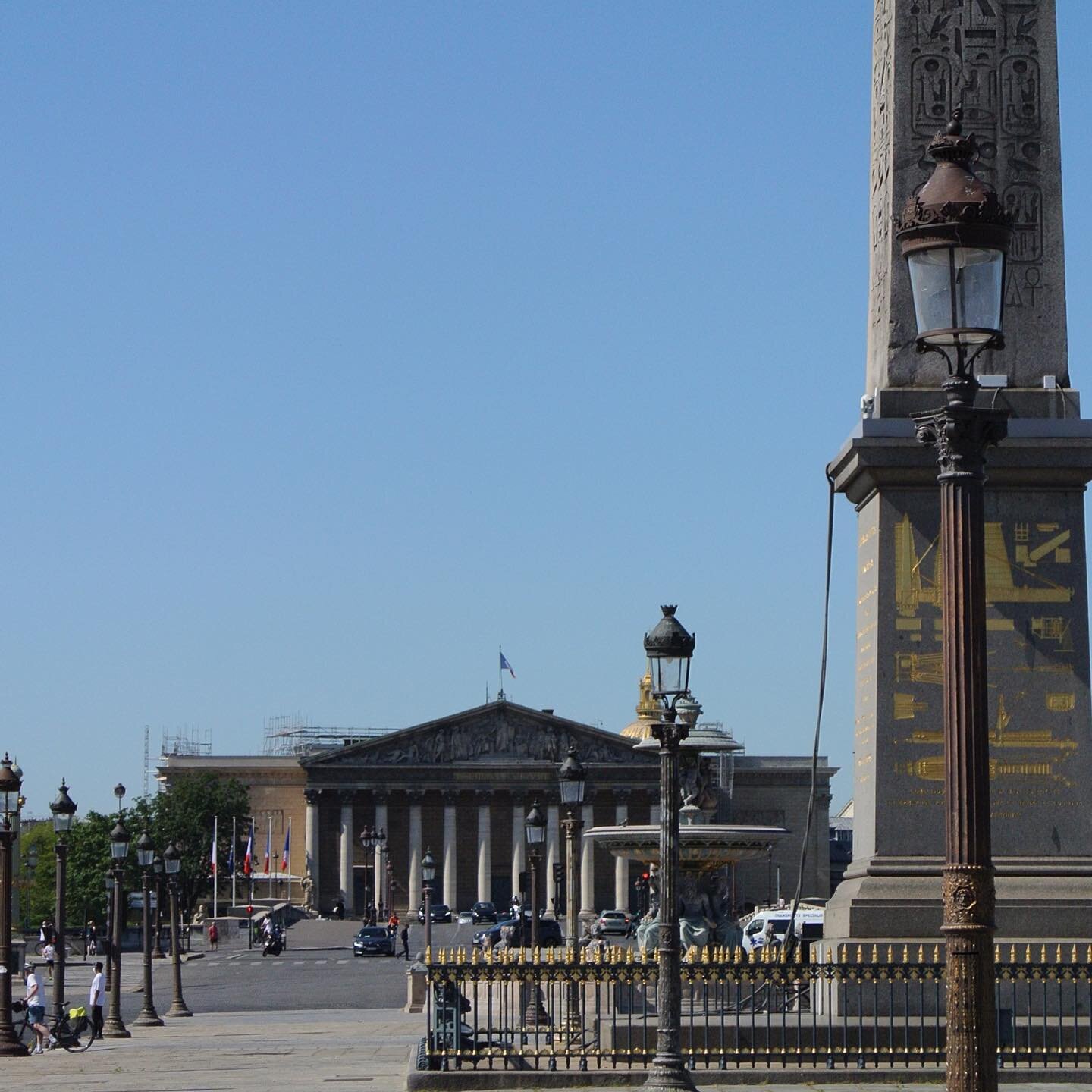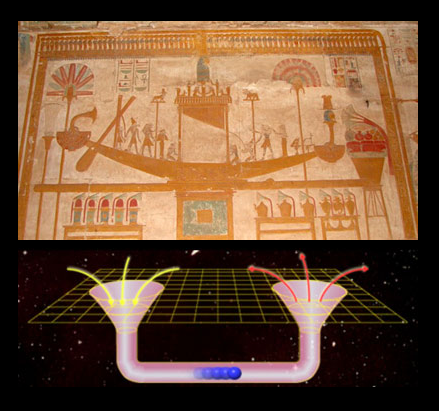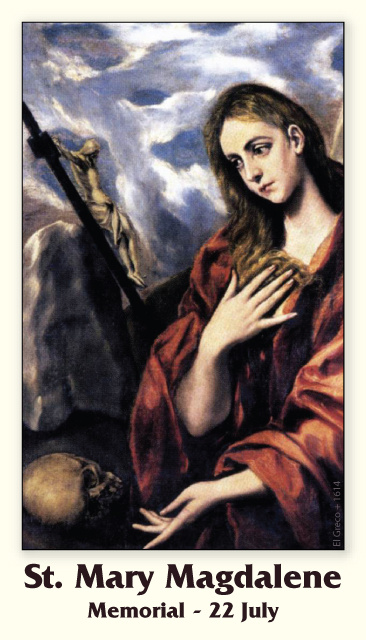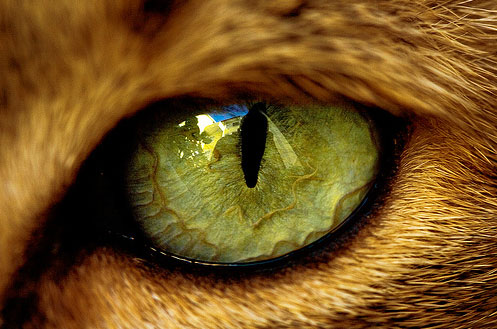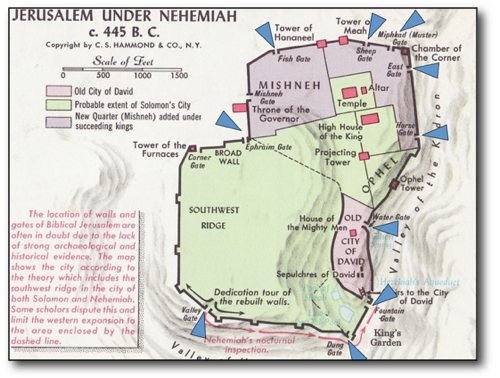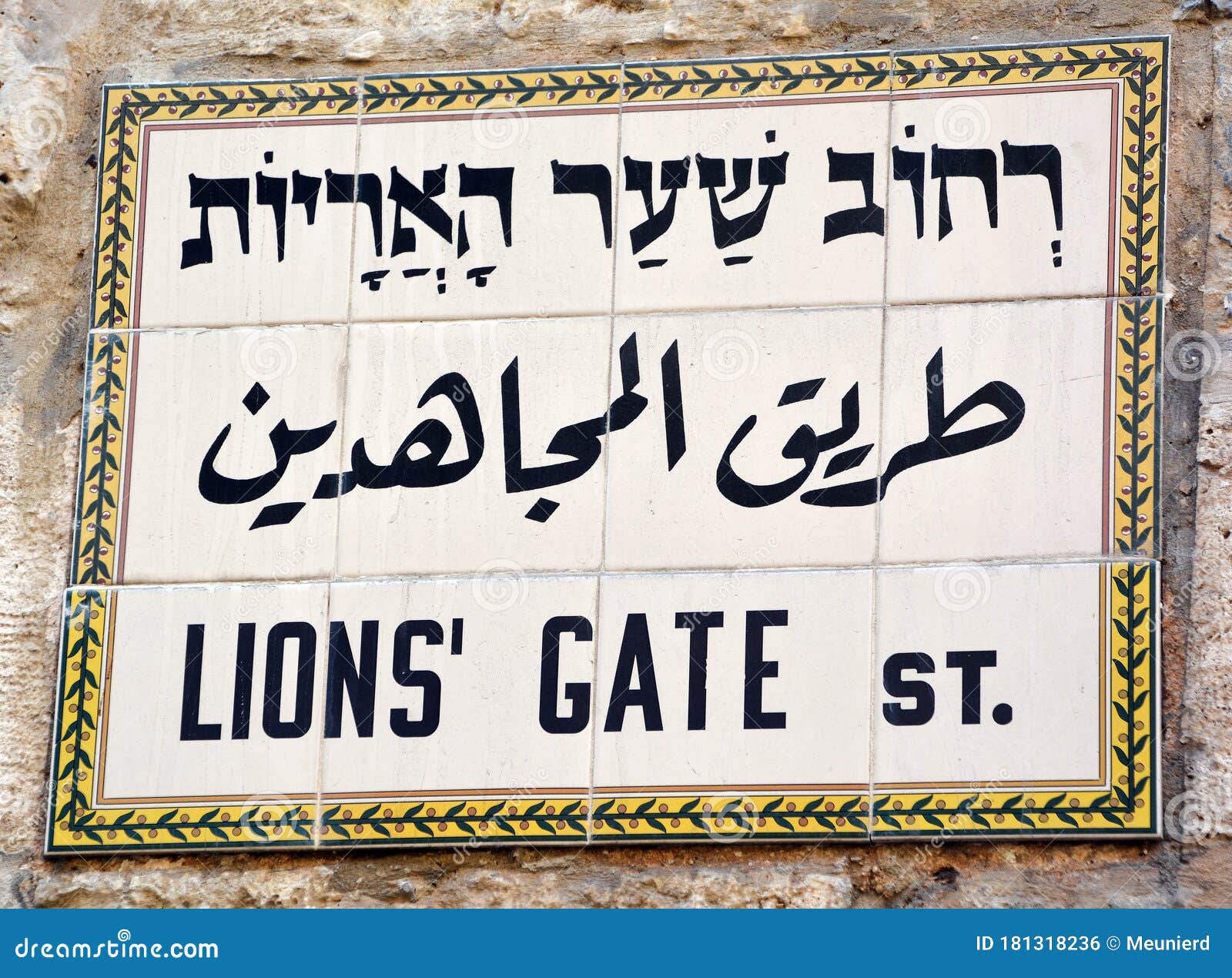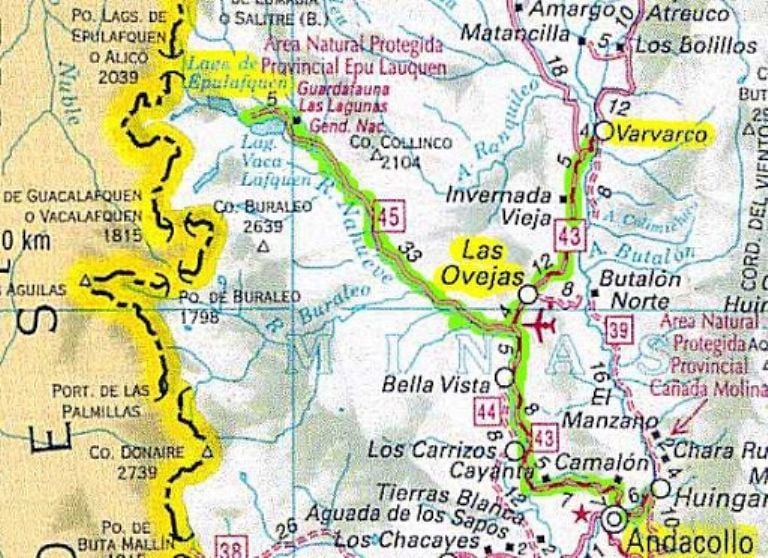|
Rispondi |
Messaggio 1 di 25 di questo argomento |
|
Luxor Obelisks
From Wikipedia, the free encyclopedia
The Obelisk of Luxor at the centre of the Place de la Concorde, Paris
The remaining obelisk at Luxor Temple pylon
Both obelisks in their original position before the pylon of Luxor Temple, 1832
The Luxor Obelisks (French: Obélisques de Louxor) are a pair of ancient Egyptian obelisks, over 3,000 years old, carved to stand either side of the portal of the Luxor Temple in the reign of Ramesses II (c. 1250 BC). The right-hand (western) stone, 23 metres (75 ft) high, was moved in the 1830s to the Place de la Concorde in Paris, France, while the left-hand (eastern) obelisk remains in its location in Egypt.
The Luxor Obelisk in Paris was classified officially as a monument historique in 1936.
The Luxor Temple predated Ramesses II by about 150 years. During his reign, renovations were made that included the addition of the two obelisks.
The obelisks were each carved from a single piece of red granite, quarried about 100 miles (160 km) south of Luxor in Aswan, transported on a specially designed barge, and lowered into place with ropes and sand.[1]
The two obelisks were slightly different heights, and the one remaining in Luxor is taller. The shorter obelisk was mounted on a taller pedestal and placed farther from the pylon than the other. To an advancing spectator the obelisks may have appeared to be the same height, and this design choice may have been highly deliberate.[2][3]
The obelisk remaining in Luxor is leaning.[4] The Paris obelisk has a fissure in the original stone that had been tended to in antiquity.[5]
The eastern and western faces of each obelisk were slightly convex, the only two ancient obelisks with the feature, and the reason for this is not understood.[2]
Both obelisks feature hieroglyphic text carved in sunken relief on all four sides. In the 19th century, François Chabas produced a full translation of the western (Paris) obelisk, which is about Ramesses II, Amun-Ra, and Horus, and can be read here.
Luxor Obelisk in Paris
[edit]
 Removal of the obelisk
The idea to transport the Luxor Obelisks to Paris appeared first during Napoleon's campaign in Egypt. On 21 March 1799 General Louis-Charles-Antoine Desaix wrote a letter to Napoleon informing him of the existence of two obelisks in Thebes which would constitute an extraordinary sight once brought to Paris.[6] Similarly, Vivant Denon recalls in his 1802 Voyage dans la basse et la Haute Égypte the possibility to bring the obelisks to Paris as a trophy of French conquest.[7] Finally, on 8 October 1800, Jean-Marie-Joseph Coutelle presented before the Institut d'Égypte in Cairo the first technical considerations on the transport and erection of one of the obelisks to the Place de la Concorde.[8] With the eventual end of the French Campaign in Egypt, these plans, however, were never realized.
Under Napoleon's successor, Louis XVIII, the French acquired rights to Cleopatra's Needle in Alexandria, though this obelisk was never moved to France and ended up in New York City in 1881.
In the 1820s Charles X opened an Egyptian Museum and sought an obelisk as a piece of Egyptian art. Around this time, Jean-François Champollion, who had recently achieved prominence for his decipherment of the Rosetta hieroglyphs, saw the Luxor obelisks for the first time and urged the French government to acquire them over any other obelisks.[9]
 Cairo Citadel Clock Cairo Citadel Clock, reportedly given by the French in the 1840s, outside the Mosque of Muhammad Ali
In November 1830, Muhammad Ali Pasha, ruler of Ottoman Egypt, officially gave the Luxor obelisks to France. In so doing he reversed a previous gift of the two obelisks to the British: on a suggestion by France's Consul-General Mimault, himself inspired by Champollion, he instead gave the UK the obelisk of Hatshepsut in Karnak Temple, which was in fact impractical to extract from the surrounding stone structures as Champollion knew well; the British nevertheless accepted.[10] Also, French diplomat Baron Isidore Justin Séverin Taylor, Mimault's senior, finalized the terms of the gift despite having been mandated to do so by Charles X, who had been overthrown in the meantime by the July Revolution.[11]
In reciprocation for the gift, France gave the Ottomans a mechanical clock in the 1840s, today known as the Cairo Citadel Clock.[4] The clock has rarely worked since its arrival in Cairo, but in 2021 the Supreme Council of Antiquities announced that "Egypt is seeking to repair the citadel clock, one of the oldest of its type in the world, so that it will work again."[12][13]
In 1981, President François Mitterrand of France definitively renounced possession of the second obelisk, thus restoring its property to Egypt.[14][15]
Transport and re-erection
[edit]
 Sphinx Sphinx towing the barge Louqsor ferrying the Luxor Obelisk to France
It was decided that the western (shorter) obelisk would be moved first, and in 1831, it was taken down. It was transported by a ship custom-built for the transport, the Luxor. It arrived in Paris in 1833 and was erected in 1836 at the centre of Place de la Concorde by King Louis-Phillipe. Champollion could not see the completion of his project, since he died in 1832 as the obelisk was still between Luxor and Alexandria.[10]
The total cost of relocating the obelisk was estimated at 2.5 million francs (equivalent to an estimated €16 million or $19 million in 2020).[16][17] The high cost may be why the second obelisk was never moved.
The choice of the Concorde was politically expedient, because that spot was iconic and emotionally charged — not least for having been the main location of the guillotine during the French Revolution — and it was difficult to find a way to fill it in a way that would convey sufficient prestige but not inflame political passions. The obelisk matched these criteria perfectly, given its antiquity and lack of connection with French history. It won over alternative options including the Cour Carrée of the Louvre, which had been recommended by such luminaries as Edme-François Jomard and Vivant Denon, but would have been technically more difficult.[10]
 Detail of the modern pedestal in Paris
The present-day pedestal was originally intended for an equestrian statue by Jean-Pierre Cortot of Louis XVI, but the statue was destroyed during the July Revolution in 1830.[citation needed] In 1839, diagrams explaining the complex machinery that was used for the transportation were added to the pedestal.[18]
The original Egyptian pedestals involved sculptures of baboons with prominent male genitalia, raising their hands to the sun. A fragment of this original pedestal from the rear of the remaining obelisk was brought to Paris at the same time as the obelisk, intended to be displayed with it. Deemed too obscene for public exhibition, it was sent to the Egyptian section of the Louvre.[19]
France added a gold-leafed pyramid cap to the top of the obelisk in 1998,[20] with the costs covered by sponsorship from Yves Saint Laurent.[10] It had long been suspected that the bare pyramidion had originally been covered with a bronze, gold, or electrum cap,[21] speculated to have been stolen in the 500s BC.[citation needed]
With the pedestal and cap, the height of the monument is approximately 33.37m (109ft).[22]
Following her visit to Paris in 1840 Lydia Huntley Sigourney wrote her poem Obelisk of Luxor, in the Place de la Concorde, which she published in her Pleasant Memories of Pleasant Lands in 1842. [23]
- On 1 December 1993, demonstrators from Act Up Paris [fr], an organization dedicated to fighting AIDS, covered the Parisian obelisk with a giant pink condom to mark World AIDS Day.[24][25]
- In 1998 Alain "Spiderman" Robert, the French urban climber, illegally scaled the Parisian obelisk without the use of any ropes or other climbing equipment or safety devices.[26]
- In 1998, the monument was covered by a replica trophy as part of the 1998 World Cup[27]
- In 1999 as part of Paris's millennium celebration activities, 300 brass disks and nearly 1,000 feet of yellow thermosensitive strips were placed around the obelisk in order to use it as the gnomon of a functioning sundial. They remained until the end of the year 2000.[22]
- In 2015 Milène Guermont's monumental interactive sculpture PHARES[28] was displayed next to the obelisk for several months, where it was designed to illuminate the obelisk.
- August 28, 2024 Place de la Concorde in Paris, France was the stage for the Paralympic Opening Ceremony with the western Luxor Obelisk center stage of the venue.
|
|
|
|
Rispondi |
Messaggio 11 di 25 di questo argomento |
|
Place de la Concorde
This square used to be named Place Louis XV after the king who built it, including the two magnificent buildings looking on the square, which were royal property. In the middle of the square used to stand a statue of the same king, which was of course destroyed during the French Revolution. The obelisk, a gift from Egypt, came later in 1836.
With 19 acres, this is the largest square in Paris, therefore it was used for celebrations gathering large crowds: a notable one was a banquet for the marriage of the future Louis XVI with Marie-Antoinette. During that event, fireworks ignited a fire which caused panic among the thousands of people attending and over one hundred of them died crushed by the mass movement.
During the reign of terror, one of the guillotines was placed there for executions of high profile personalities: including the king and queen, and many members of the revolutionary government like Danton and Robespierre. By the foot of the obelisk, a plaque serves as a reminder of the events.
https://www.parisology.net/place-de-la-concorde |
|
|
|
Rispondi |
Messaggio 12 di 25 di questo argomento |
|
|
|
|
Rispondi |
Messaggio 13 di 25 di questo argomento |
|
EL CERN, NI CIENCIA NI MAGIA: ALQUIMIA
Hace años que vengo siguiendo las actividades Illuminati en diferentes ámbitos (social, cultural, científico, educativo, político, etc.), y siempre hay algunos puntos que permanecen "oscuros" por un cierto tiempo, hasta que finalmente desvelamos su real significado e intencionalidad. El Gran Colisionador de Hadrones, GCH (en inglés Large Hadron Collider, LHC) del CERN, junto con el Acelerador Relativista de Iones Pesados o RHIC por sus siglas en inglés (Relativistic Heavy Ion Collider), han sido algunos de los "avances" científicos que hemos tenido entre ojos, vigilando su desarrollo para descubrir cuál es el objetivo que se esconde por detrás de ellos, detrás de la "inocente" propuesta de "recrear el segundo previo al Big Bang".
Por cierto, la teoría del Big Bang fue elaborada por un jesuita... ¿sabían? Este no fue Papa pero seguro lo canonizan...

Monseñor Georges Henri Joseph Édouard Lemaître, (1894 - 1966) fue un sacerdote belga, astrónomo y profesor de física en la sección francesa de la Universidad Católica de Lovaina. Él fue el primer académico conocido en proponer la teoría de la expansión del universo, ampliamente mal atribuida a Edwin Hubble. También fue el primero en derivar lo que se conoce como la ley de Hubble e hizo la primera estimación de lo que ahora se llama la constante de Hubble, la cual publicó en 1927, dos años antes del artículo de Hubble. Lemaître también propuso lo que se conocería como la teoría del Big Bang del origen del universo, a la cual llamó "hipótesis del átomo primigenio" o el "huevo cósmico". (Demasiado "mitológico" para mi gusto...). Un huevo cósmico o huevo del mundo es un tema mitológico y cosmogónico usado en los mitos de creación de muchas culturas y civilizaciones. Típicamente el huevo cósmico representa simbólicamente un comienzo de algún tipo.
Irónicamente la teoría del Big Bang se atribuye generalmente a Albert Einstein, quien fue el principal detractor de Leimatre hasta que, años después, comprobó que el religioso belga había acertado en los cálculos astronómicos, de alta complejidad, y juntos profundizaron las investigaciones. (De hecho, el "genial" Alberto anduvo robando por todas partes... también a Tesla).
Volviendo al tema central del CERN, he llegado a la conclusión, después de tomar en cuenta toda la información y las personas asociadas con el proyecto, que no es OTRA COSA SINO UNA APLICACIÓN MÁS DE LOS ILLUMINATI DE UNA ANTIGUA TECNOLOGÍA OCULTA DE LOS ÁNGELES CAÍDOS. Los Illuminati están obsesionados con el cumplimiento de lo que George Bush (padre) llamó el "cumplimiento de un antiguo sueño", en referencia a la vuelta a los días anteriores a Noé, cuando los híbridos gigantes habitaban en la tierra. El restablecimiento del estado de la Atlántida de los reyes filósofos.
Con todo, una de las cosas que más llamó la atención cuando la creación del CERN, y que la mayoría de la gente no conseguía entender, fue CUÁL PODÍA SER LA RELACIÓN ENTRE UN COLISIONADOR DE HADRONES "TECNOLÓGICO Y CIENTÍFICO" Y UNA ESTATUA DEL DIOS SHIVA, "EL DESTRUCTOR", COMPLETAMENTE MÍSTICO Y MITOLÓGICO.
.jpg) |
| Observen el círculo que rodea al dios Shiva en su danza, y compárenlo con el acelerador de partículas. |
Ahora bien, lo interesante de todo esto es que algunos han relacionado todos estos elementos con lo que se conoce popularmente como Stargate, o portales ("VORTEX-GATE... PROCURANDO LA PUERTA DE SALIDA"). Hay varias teorías acerca de si el CERN es o no un Stargate. Pero vemos un poco acerca de lo que es conocido por los amantes de lo paranormal como "el dispositivo de Osiris", el Ta-Wer. Según los estudiosos, el Ta-Wer era un solo un símbolo místico que representaba la conexión entre Abydos (ciudad egipcia) y un lugar mítico en el mundo subterráneo, interpretado como la "Tierra de los muertos".
Bueno, es un sentimiento común entre los investigadores de ovnis que el Ta-Wer representado en algunas imágenes, en las paredes del templo de Abydos, es una estructura que podría ser parte de un gran dispositivo que activa portales dimensionales, puertas estelares o agujeros de gusano.
Arriba pueden ver un modelo de agujero de gusano cósmico en comparación con el "dispositivo de Osiris", que coincide con la teoría de Kurt Gödel, que por el hecho de que nada puede viajar más rápido que la luz, un "atajo" podría ser abierto en ciertas coordenadas del espacio, para conectar dos puntos distantes. Una enorme cantidad de energía que produciría una enorme cantidad de gravitación que podría "doblar" el espacio, formando dos conos de luz interconectados por un túnel espacio-tiempo donde podría pasar la materia.
La historia oficial: El LHC es un acelerador de partículas, construido para emitir protones a muy alta velocidad y en direcciones opuestas, para que choquen entre sí, creando una enorme cantidad de energía capaz de reproducir las condiciones cósmicas similares a aquellas que generan fenómenos tales como la materia oscura, la antimateria y en última instancia, la creación del universo hace miles de millones de años. El equipo científico mantiene la velocidad de rayo hacia arriba, entre el 3,5 y 12 TeV (Teraelectron voltios) para llegar a una energía de colisión alrededor de 90 veces a más de 500 TeV.
La historia "oculta": De acuerdo con la Prof. Irina Aref'eva y el Dr. Igor Volovich, ambos físicos matemáticos en el Instituto de Matemáticas Steklov en Moscú, las energías generadas por las colisiones subatómicas en el LHC pueden ser lo suficientemente potentes como para rasgar el espacio-tiempo, generando agujeros de gusano. Lo mismo opinan otros físicos (ver aquí).
Es una idea común al 99% de los físicos "fuera del sistema CERN", que el LHC puede producir suficiente energía como para abrir agujeros de gusano, lo que lo convierte en un dispositivo STARGATE enorme. Lo que quiero decir es que la "búsqueda de la partícula de Dios" es una bandera falsa, una tapadera para ocultar OTRA COSA... para variar.
Además de todas estas cosas, como cereza del postre, nos encontramos con los siguientes paneles dentro de las instalaciones del LHC:
Esto es MUY raro... las fotos que ven arriba fueron tomadas DENTRO de la instalación LHC. Se trata de extraños paneles con escritas antiguas, montados sobre una estructura y con algún tipo de haz de luz azul que los rodea, algo que parece ser un sensor de movimiento o cosa parecida. Algunos paneles parecen escritos en mandarín antiguo, otros tienen caracteres árabes, otro en hebreo, otro en sánscrito y otro contiene unos caracteres muy extraños, que no se parecen con nada que haya visto antes. En la India, las únicas personas que leen y escriben en sánscrito, son los estudiosos de los Vedas y los Upanishads, las escrituras escritas en el "lenguaje de los dioses". ¿Por qué estos paneles tienen sensores de seguridad, por qué están en el CERN, y para qué sirven?
Bien, pero las referencias místico-mitológicas no terminan con el antiguo Egipto. Ya conocemos la historia de Nimrod, que construyó una torre que fue diseñada para ser una escalera o puerta de entrada al cielo, la famosaTorre de Babel. Según la mitología tradicional, Nimrod quería conocer a Dios y entender su funcionamiento. Su torre era, literalmente, una escalera a las estrellas, una manera de entrar en la dimensión en la que Dios habitaba.
Hay ocultistas y mitólogos como William Henry que han afirmado que los antiguos como Nimrod y otros utilizaron estas torres y puertas estelares. Las torres crean agujeros de gusano y los dioses de las estrellas pasarían a través de ellas. Pero, por supuesto, a Dios no le gustó la idea y confundió el idioma de la gente de Nimrod. En contrapartida, Nimrod ORGANIZA LA MASONERÍA. Ellos continuaron construyendo estos portales estelares y templos.
A lo largo de la historia antigua ha habido muchos relatos de dioses que viajaban de un lugar a otro utilizando intrincadas maquinarias que los llevarían de una dimensión a otra. Hay historias de la antigua Sumeria que hablan acerca de los llamados "dioses", llegando a través de una puerta estelar doble con columnas, y existen tallas que han representado tal hazaña.
Ha habido muchos intentos de abrir agujeros de gusano y, al mismo tiempo, el objetivo de estos trabajos mágicos era convocar alguna manera demonios o ángeles para venir e iniciar la escatología (los tiempos finales). Hay un montón de magos que han afirmado que han abierto un agujero de gusano usando métodos mágicos. Estos son los métodos que se dice han traído a otros seres a nuestra existencia dimensional.
Todos hemos oído hablar que en algún lugar existe algún grupo secreto que controla el mundo. Sin embargo, es necesario entender que hay varios grupos con agendas programadas, y que no son en absoluto en contra del uso de la magia oscura para lograr sus fines desconocidos. Algunos teóricos esotéricos creen que las fuerzas mágicas trabajan para dar forma a nuestras vidas. Y que la élite tiene entre sus filas al más oscuro de los magos o a los profesionales de las artes oscuras que pueden llegan a la matriz y cambiar las líneas de tiempo mediante la apertura de portales o "puertas estelares" a otros mundos.
La idea de dar un empujón dimensional para abrir una puerta e invitar a un dios o una entidad a entrar, ha sido el desafío desde la época de Nimrod hasta los tiempos de John Dee, Edward Kelly, Aleister Crowley, L. Ron Hubbard y hasta Jack Parsons.
Entre los años 1582 y 1589 el erudito Inglés John Dee llevó a cabo una serie de comunicaciones rituales con un conjunto de entidades desencarnadas que con el tiempo llegó a ser conocido como los ángeles de Enoc. El plan de Dee era utilizar el complejo sistema de magia comunicada por los ángeles para avanzar en las políticas expansionistas de su soberano, la reina Isabel I. ¿Para qué? ¿Simplemente para expandir las tierras? NO. Ya estaban sentando las bases que eran necesaria para desarrollar todo el plan del NUEVO ORDEN MUNDIAL. En primer lugar y lo más importante de todo, conquistar las tierras estratégicamente repartidas alrededor del mundo que hoy les permiten tener una COBERTURA TOTAL DEL GLOBO. Todo esto, evidentemente, no por sabiduría de hombres. Este plan NO ES SIMPLEMENTE HUMANO.
|
|
|
|
Rispondi |
Messaggio 14 di 25 di questo argomento |
|
Con la ayuda de su compañero, el investigador ocultista Edward Kelley, planeaban abrir un portal al otro lado con las claves inferiores de Enoc, un alfabeto mágico que fue cantada. Literalmente estaban convocando a los espíritus de los muertos para hacer espionaje para la reina, y de acuerdo con la historia tuvieron bastante éxito. Estas entidades declararon que el nombre celestial para Satanás era Choronzon y que había al menos 4 torres de vigilancia o pilares en los que existen puertas estelares en la tierra. También hay una manera de abrir portales en otro lugar, siempre y cuando ciertas claves y sigilos se utilicen para convocar a las entidades a fin de llevar a cabo un trabajo apocalíptico o hechizo.
Uno de los otros rituales realizados por John Dee fue convocar al Arconte encargado de la puerta, Cernunnos. Para los celtas, Cernunnos, Cerne o Belatucadros, era representado como una figura humanoide, generalmente teniendo cuernos. Uno de los títulos Cernunnos era el señor de la caza, pero a medida que pasaba el tiempo la agricultura se fue uniendo junto con la caza y el Dios Cornudo se convirtió en el dios de la fertilidad también. El culto de esta deidad era realizado esperando alcanzar no sólo buena cacería, sino también garantizar una cosecha abundante e incluso la procreación exitosa de la humanidad. Como tal, lo encontramos representando el concepto de la vida, la muerte y el renacimiento, aunque en otros mitos Cernunnos es representado como un dios con cuernos que controla las serpientes. Las serpientes eran símbolos de la mortalidad, la curación y la resurrección de los muertos, o el uso de los muertos para la adivinación o la nigromancia. Al considerar la muerte como parte integral del "círculo continuo" de la vida, Cernunnos también ha sido asociado a los infiernos, el reino de los muertos.
Las invocaciones y la citación de los arcontes eran parte de algo que se llama "El Trabajo del Apocalipsis". La idea era convocar a varios ángeles y demonios de los bajos fondos para abrir una Puerta Estelar o escalera al cielo.
En realidad, fue uno de los primeros intentos de abrir un portal a otra dimensión y convocar a los espíritus. Fue literalmente un ritual para abrir los secretos del universo y conversar con los dioses. Pero los ángeles nunca permitieron que Dee fuera el instrumento mediante el cual se llevase a cabo la fórmula ritual para iniciar el Apocalipsis. Los ángeles declararon que el "trabajo" tendría que ser realizado en un momento posterior. El ritual sin terminar se sentaría como una bomba de tiempo oculta tictac, esperando que algún mago inteligente, tal vez guiado por los ángeles, para completarlo. Dee nunca recibió la señal para llevar a cabo el Trabajo del Apocalipsis en su vida. Esto estaba reservado para otro siglo y otro hombre. Ese hombre era Aleister Crowley.
Crowley y sus seguidores querían marcar el comienzo de una moral más grave que cualquier otra experiencia en el mundo. Para lograr esto tuvieron que llevar a cabo rituales poderosos. Sus métodos fueron tan aberrantes que Mussolini lo echó de Sicilia llamándolo un "bárbaro". Crowley profetizó que después de su muerte se realizaría un trabajo final o ritual donde se abriría un portal y los "jefes secretos" o antiguos dioses egipcios volverían.
Dos seguidores de Crowley, L. Ron Hubbard y Jack Parsons, intentaron abrir un portal usando uno de los hechizos de Crowley entre 1945 -1946. Fue una serie de ceremonias mágicas llamadas "Trabajo Babilonia" (Babalon Working). Muchas personas creen que lo que atravesó el portal fueron los seres que serían conocidos como los extranjeros "grises".
L. Ronald Hubbard llegó a crear la Cienciología, una religión que enseña que las entidades extraterrestres son responsables del uso de los seres humanos como avatares y que los espíritus extraterrestres fuerzan a la humanidad a hacer el mal.
Jack Parsons se convirtió en el fundador de JPL (Jet Propulsion Lab), y afirmó que durante el "Trabajo Babilonia", tanto él como Hubbard fueron los que lograron la ampliación del portal de Amalantrah de Crowley, permitiendo la entrada a los jefes secretos para "ayudar" a la humanidad. Más tarde intentó otro proyecto secreto, conjurando la clave inferior de Salomón para marcar el comienzo de la gran tribulación. Durante el ritual, él accidentalmente explotó su laboratorio mientras jugaba con poderosos explosivos. Algunos creyeron que él estaba tratando de abrir un Stargate para convocar a los demonios del Goetia.
Los Experimentos del CERN
El CERN está vinculado a varios proyectos secretos que están llevando a cabo la Unión Europea y la Comisión Europea Trilateral. También es el responsable por la existencia de la red de internet (todavía no consigo descubrir cuál es la utilidad de la misma, por lo menos a nivel "portales"; a nivel vigilancia su funcionalidad es OBVIA), y han estado haciendo investigaciones en curso para los gobiernos con respecto a la sostenibilidad global.
También se informó de que en 1999 el CERN propuso y llevó a cabo experimentos cuánticos Vortex en busca de axiones solares. Los axiones son partículas hipotéticas que son componentes de la materia oscura. Con el fin de encontrar estos axiones, el CERN propuso el uso de un imán desarmado llamado Satanás. El nombre era un acrónimo de Solar Axion antena telescópica.
Existen muchos otros experimentos que están relacionados con extraños acontecimientos en diferentes locales, pero sinceramente no tenía ahora el tiempo de verificarlos a todos, de manera que les dejo el dato para los que quieran pesquisar por su cuenta. El hecho más famoso relacionado con uno de estos supuestos experimentos fue la conocida "espiral de Noruega", que apareció en el cielo el 8 de diciembre de 2009... casualmente al mismo tiempo que el colisionador realizaba una prueba. De hecho, más tarde hubo confirmación oficial de que el fenómeno tenía relación con el CERN, y también con el HAARP (no sé cuál).
El famoso 21 de diciembre de 2012
El experimento definitivo en el que finalmente se "descubrió" el bosón de Higgs tuvo lugar entre el 17 y el 21 de diciembre de 2012. ¿Se trató de una mera coincidencia, de una provocación de la comunidad científica o realmente el experimento del CERN tenía relación con el cambio de ciclo Maya? ¿O hay algo más real y oculto? En el centro de nuestra galaxia, la Vía Láctea es un agujero negro super denso.
¿Podrían los experimentos llevados a cabo por el CERN-LHC, el 21 de diciembre de 2012, haber sido una tentativa de liberar a los seres espirituales caídos encerrados en este pozo sin fondo, este Blackhole?
Esta fecha podría haber sido el momento más oportuno para abrir una puerta de entrada o agujero interdimensional en este agujero negro en el centro de nuestra galaxia.
Imagine a la Vía Láctea como una gran cerradura de caja fuerte.
Para abrirla, todas las combinaciones deben estar en el orden correcto, es decir, perfectamente alineadas.
Esta alineación se logró el día 21 de diciembre de 2012, cuando el sistema solar se alineó con el plano galáctico.
La llave (CERN-LHC) podría en aquel momento haber sido insertada (encendida) para abrir la puerta (agujero de gusano a través de la tierra hasta el agujero negro en el centro de la Galaxia).
También a los mensajeros que no guardaron su primer estado sino que abandonaron su propia morada, los ha reservado bajo tinieblas en prisiones eternas para el juicio del gran día. Judas 1:6
El quinto mensajero tocó la trompeta. Y vi que una estrella había caído del cielo a la tierra, y se le dio la llave del pozo del abismo. Y abrió el pozo del abismo, y subió humo del pozo como el humo de un gran horno; y se oscureció el sol y también el aire por el humo del pozo. Y del humo salieron langostas sobre la tierra, y se les dio poder como el poder que tienen los escorpiones de la tierra... Y tienen sobre sí un rey, el mensajero del abismo, cuyo nombre en hebreo es Abadón, y en griego tiene por nombre Apolión DESTRUCTOR.Apocalipsis 9:1-3,11
Porque si Yahweh no dejó sin castigo a los mensajeros que pecaron, sino que, habiéndolos arrojado al Tártaro en prisiones de oscuridad, los entregó a ser reservados para el juicio... 2 Pedro 2:4
Y a Miguel le dijo el Señor: ve y anuncia a Shemihaza y a todos sus cómplices que se unieron con mujeres y se contaminaron con ellas en su impureza, ¡que sus hijos perecerán y ellos verán la destrucción de sus queridos! Encadénalos durante setenta generaciones en los valles de la tierra hasta el gran día de su juicio.
Enoc, capítulo 10
¿Será que el 21 de diciembre de 2012 estos satanistas intentaron (y seguramente con éxito, PORQUE ESTÁ ESCRITO), liberar al REY DE LOS ÁNGELES CAÍDOS, ABADÓN/APOLIÓN, "EL DESTRUCTOR" (SHIVA) DE SU PRISIÓN EN OTRA DIMENSIÓN?
Y aún falta que liberen a los (200) titanes/ángeles caídos que bajaron a la tierra y cohabitaron con mujeres, aquellos Vigilantes de Judas 1:6 y 2 Pedro 2:4, que engendraron una raza de gigantes, los NEPHILINS, que fueron encadenados en LOS VALLES DE LA TIERRA (¿en el interior de la tierra?). El Libro de Enoc dice que estos 200 ángeles caídos (los titanes) están encarcelados en el Tártaro durante 70 generaciones. Una generación en la Biblia es de unos 70-80 años ("El lapso de nuestra vida es de setenta años, y quizás los más robustos lleguen a ochenta", Salmo 90.10). Estos titanes han estado encarcelados por alrededor de 5000-5600 años.
Las profecías mayas y aztecas para el 21 de diciembre de 2012 NO HABLARON NUNCA ACERCA DE UN FINAL APOCALÍPTICO DEL MUNDO. Más bien mencionaban el regreso de "los Nueve", Bolon Yokte Ku. Estos Nueve eran vistos como viviendo en el Inframundo, y se describen generalmente como dioses de los conflictos y de la guerra, y por lo tanto, vinculados con los peligrosos tiempos de transición, malestar social, eclipses, y los desastres naturales como terremotos. Se dice que al final de un baktun, ellos abandonarían su reino subterráneo y surgirían a la superficie de la Tierra, donde batallarían con las 13 deidades de los cielos.
Pero "Nueve Dioses" no son sólo un ingrediente de la cultura maya. Hubo también nueve dioses en la religión del antiguo Egipto, así como en muchas otras (por ejemplo, la India). Para los egipcios, eran también conocidos como los Nueve Principios y estaban vinculados directamente con su Deidad Creadora, Atum. El control de estos Nueve Principios era considerada fundamental para el exitoso gobierno de un faraón: Un control adecuado sobre ellos significaba que el equilibrio (vinculado con la deidad Ma'at) era mantenido y que todo estaba bien con Egipto, el mundo y el universo.
Por tanto, podemos ver que Los Nueve, en un entorno egipcio o maya, estaban estrechamente relacionados, en ambos casos, y determinaban el gobierno de una era, por lo que su consulta es de suma importancia para el éxito de la nación... o del establecimiento de un Nuevo Orden Mundial.
https://despierta-tu-que-duermes.blogspot.com.ar/2015/03/el-cern-ni-ciencia-ni-magia-alquimia.html
|
|
|
|
Rispondi |
Messaggio 15 di 25 di questo argomento |
|
|
|
|
Rispondi |
Messaggio 16 di 25 di questo argomento |
|
|
|
|
Rispondi |
Messaggio 17 di 25 di questo argomento |
|
- The lander's name" Philae" comes from an island where an obelisk was found inscribed with both Egyptian and ancient Greek texts very much like the Rosetta Stone
- The landing site was named "Agilkia" on November 4th, in reference to an island on the Nile River where a temple complex ("Temple of Isis") and artifacts originally found on Philae Island were relocated at the time of the Aswan Dam construction
https://www.goroadachi.com/etemenanki/rosetta_code.html |
|
|
|
Rispondi |
Messaggio 18 di 25 di questo argomento |
|
|
|
|
Rispondi |
Messaggio 19 di 25 di questo argomento |
|
|
|
|
Rispondi |
Messaggio 20 di 25 di questo argomento |
|
|
|
|
Rispondi |
Messaggio 21 di 25 di questo argomento |
|
 MANDEL NGAN/AFP/GETTY IMAGES MANDEL NGAN/AFP/GETTY IMAGES
President Barack Obama welcomes Pope Francis to the White House on September 23, 2015 in Washington, D.C.
|
|
|
|
Rispondi |
Messaggio 22 di 25 di questo argomento |
|
|
|
|
Rispondi |
Messaggio 23 di 25 di questo argomento |
|

Post by shipstamps » Tue Nov 18, 2008 4:27 pm
 Not much is know about the caravel, where and when built unknown. Tonnage 200 ton, dim. 85 x 25 x 14ft. (draught) Four masts, fore and main mast square rigged, mizzen and Bonaventura mast lateen rigged. She was the flagship of Don Pedro de Mendoza (1487-1537) expedition to the River Plata. Mendoza held a post in the court of Charles V, when he in 1534 made an offer to Emperor Charles V to make an expedition on his own account for the discovery and conquest of Paraguay and the countries on the Rio La Plata. 24 August 1534 Mendoza on board the MAGDALENA and 13 other vessels, with 3000 men set sail from San Lucar, Spain. Receive from the Emperor before sailing 2.000 ducats, with the condition, when he transported to the new founded colonies 1000 colonists and 100 horses, build a road to the Pacific Ocean, erect three forts within two years he would receive 2.000 ducats more. Also he had to take 8 monks, a physician, a surgeon, and an apothecary, but he was forbidden to introduce a lawyer in the colony. He was to have half the treasure of the chiefs killed and nine-tenths of the ransom. Mendoza was made before sailing military governor of all the territory between the Rio de la Plata and the Strait of Magellan. The office of the Governor was also made hereditary. Off the coast of Brazil the fleet was scattered in a heavy storm, and Medoza lieutenant Osario, was assassinated, according to some authorities by the orders of Mendoza himself because of suspected disloyalty. 1535 Mendoza sailed up the Rio de la Plata, and founded Buenos Aires on 02 February 1536. He erected two forts there to defend the place. Pestilence broke out and the natives became unfriendly after ill treatment by the Spaniards. His brother Don Diego led a force against the hostile tribes, but was killed with three-fourths of his men. A general conspiracy of the natives was formed, and Buenos Aires was captured and burned by the natives. Mendoza retired to the forth Sanctus-Spiritus, from where he dispatched Juan de Ayolas to explore the upper part of the river. Another brother, Gonzalo arrived with reinforcements and founded the city of Ascención in Paraguay in 1536. Mendoza, disappointed and with a broken health, embarked on board the MAGDALENA for Spain in 1537, leaving Juan de Ayolas in charge. During the long voyage to Spain he died maniac on board the MAGDALENA on 23 June 1537. The fate of the MAGDALENA is not known. Argentine 1979 400p + 400p sg 1646 Source: mostly copied from http://en.wikipedia.org/wiki/Pedro_de_Mendoza http://famousamericans.net/pedrodemendoza
https://shipstamps.co.uk/forum/viewtopic.php?t=6731
|
|
|
|
Rispondi |
Messaggio 24 di 25 di questo argomento |
|
|
|
|
Rispondi |
Messaggio 25 di 25 di questo argomento |
|
|
|
 Primo Primo
 Precedente
11 a 25 de 25
Successivo Precedente
11 a 25 de 25
Successivo
 Ultimo
Ultimo

|
.jpg)












